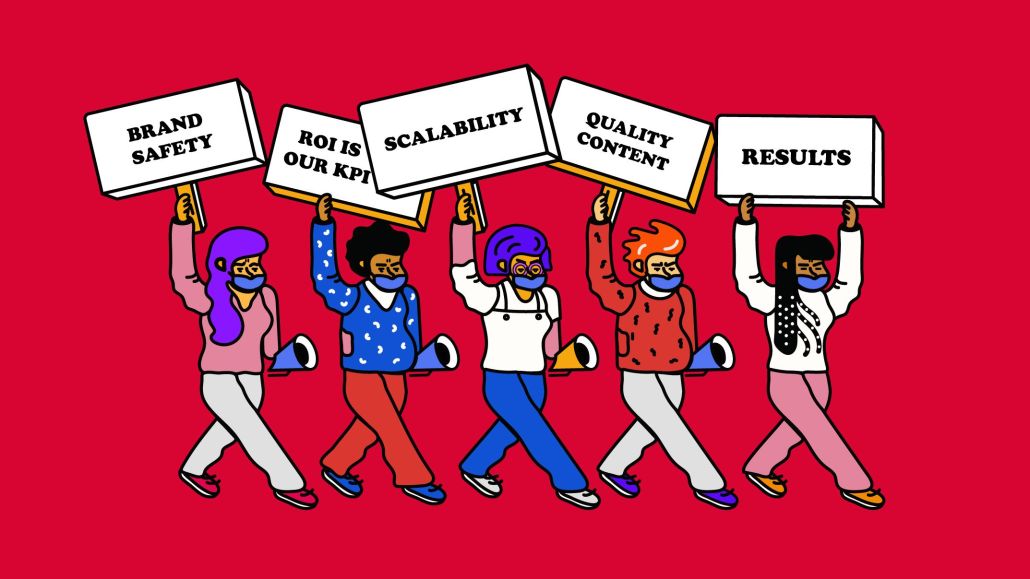‘A scalpel rather than an axe’: Buyers tackle brand suitability issues even after YouTube surmounts brand safety woes

Given that YouTube generated about $20 billion in ad revenue in 2020 and is on pace to surpass Netflix in revenue in 2021, it would appear media buyers are content with the results they get from placing their clients on the massive video platform.
It wasn’t long ago that YouTube was the poster child for brand safety problems, with advertisers appearing adjacent to all manner of inappropriate content. According to a new report today by YouTube video partner Pixability in conjunction with the Global Alliance for Responsible Media (GARM) and DoubleVerify, brand safety issues have largely been overcome, but brand suitability issues, if not handled correctly, can be an issue.
The report, titled “What Every Agency Should Know About Brand Safety, Brand Suitability & Performance on YouTube,” examined 20,000 YouTube campaigns that ran in the first half 2021. Using as a base GARM’s Aggregated Measurement Report, which deems YouTube 99% brand-safe, the Pixability report uncovered that up to one-third of campaign impressions may not be suitable for specific advertisers.
There are a few reasons behind the suitability factor, explained John Montgomery, a brand safety expert consulting with Pixability — but is best known for his long tenure as GroupM’s brand safety expert. “How do we make sure we apply brand safety strategy with a scalpel rather than an axe?” asked Montgomery. “YouTube and other media have been worried about exclusion lists and the blunt use of tools which, from my perspective, have caused harm — to the local press, for example.”
Montgomery is talking about the overuse of blocking lists, words whose mention cause advertisers to avoid that content. The word “shot”, according to the report, can cause an advertiser avoiding it to miss out on any amount of sports-related content, while the word “knife” means a CPG advertiser employing it in a blocking list might miss out on millions of viewers watching cooking videos.
“When you do that, you’re shrinking your reach and driving your cost [of advertising] up,” said David George, CEO of Pixability. “There’s a bunch of technology that’s easy to use that can help make sure” the suitable context of the word can be found while the harmful content gets avoided.
The overuse of contextual targeting, represents another major finding in the report: contextual targeting based on an advertiser’s vertical industry doesn’t always represent a silver bullet on YouTube. In fact, in some cases, aligning one’s investment in the most obvious content category often delivered lesser performance.
For example, automotive content on YouTube performed below average for auto advertisers in the first half of the year — 1 percent below average on “video to completion” rate and 24 percent below average on click-through rate. At the same time, the report found that content such as healthy living, pop culture or music delivered above average results for auto advertisers.
Bottom line, according to the report: if media buyers combine context and suitability in their search for the most effective use of YouTube, “that takes it to yet another level of effectiveness,” said Montgomery.
More in Media

Podcast companies turn to live events to capture growing advertiser spend
The surge in the number of live podcast events in 2025 reflects a broader shift: advertisers are betting bigger on podcasts — not just as an audio channel but as a full-fledged creator economy play.

Media Briefing: ‘Cloudflare is locking the door’: Publishers celebrate victory against AI bot crawlers
After years of miserably watching their content get ransacked for free by millions of unidentified AI bot crawlers, publishers were finally thrown a viable lifeline.

How Vogue could navigate potential industry headwinds as Anna Wintour — who agency execs say made ad dollars flow — brings on new edit lead
Anna Wintour’s successor at Vogue will have to overcome the myriad of challenges facing fashion media and the digital publishing ecosystem.








